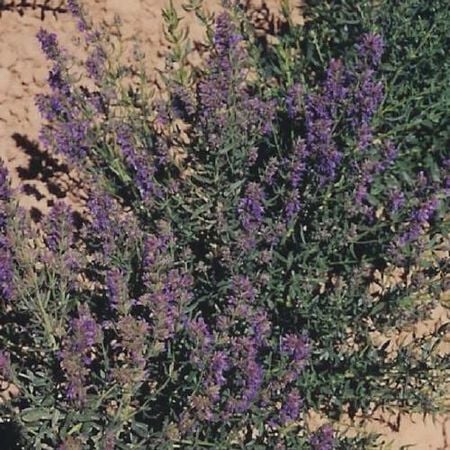Common, Hyssop Seeds
Key Attributes
Key Attributes
Product Details
Weight
0.005Botanical Name
Hyssopus officinalisSeed Type
SeedSeeds Per Gram
958Seeds Per Pound
434,450Packet
200 SeedsSow Depth
1/2"Seeds Per Ounce
27,160Breed
Open-pollinatedSun
Full SunLife Cycle
PerennialSow Method
Direct SowCategories
HerbGermination
11,12,13,14,8,9,10Days To Maturity (# Days)
85Components
Growing Instructions
![]() Learning Download: How to Grow Hyssop
Learning Download: How to Grow Hyssop
Hyssop blooms in spikes of blue, pink and red flowers and it attracts pollinators to the garden. This flowering herb is commonly grown for its leaves.
Before Planting: Sow the hyssop seeds indoors eight to 10 weeks before the last frost of the season.
Planting: Transplant the seedlings into the garden after the last frost and space the plants about 6 to 12 inches apart.
Watering: Provide 1 inch of water once or twice weekly.
Fertilizer: Prior to transplanting the seedlings to the garden, amend the soil with compost or organic material like aged animal manure.
Days to Maturity: Hyssop will reach its maturity in 75 to 85 days from planting.
Harvesting: Cut in the morning once the dew has dried. Then, hang upside down in a dark and well-ventilated area.
Tips: Hyssop needs to be pruned, so if you have a well-established plant, trim it back in the early spring.
Shipping Schedule
Our Seed Promise
 "Agriculture and seeds" provide the basis upon which our lives depend. We must protect this foundation as a safe and genetically stable source for future generations. For the benefit of all farmers, gardeners and consumers who want an alternative, we pledge that we do not knowingly buy or sell genetically engineered seeds or plants.
"Agriculture and seeds" provide the basis upon which our lives depend. We must protect this foundation as a safe and genetically stable source for future generations. For the benefit of all farmers, gardeners and consumers who want an alternative, we pledge that we do not knowingly buy or sell genetically engineered seeds or plants.
The mechanical transfer of genetic material outside of natural reproductive methods and between genera, families or kingdoms, poses great biological risks as well as economic, political, and cultural threats. We feel that genetically engineered varieties have been insufficiently tested prior to public release. More research and testing is necessary to further assess the potential risks of genetically engineered seeds. Further, we wish to support agricultural progress that leads to healthier soils, to genetically diverse agricultural ecosystems, and ultimately to healthy people and communities.
To learn more about the "Safe Seed Pledge" please visit www.councilforresponsiblegenetics.org.

